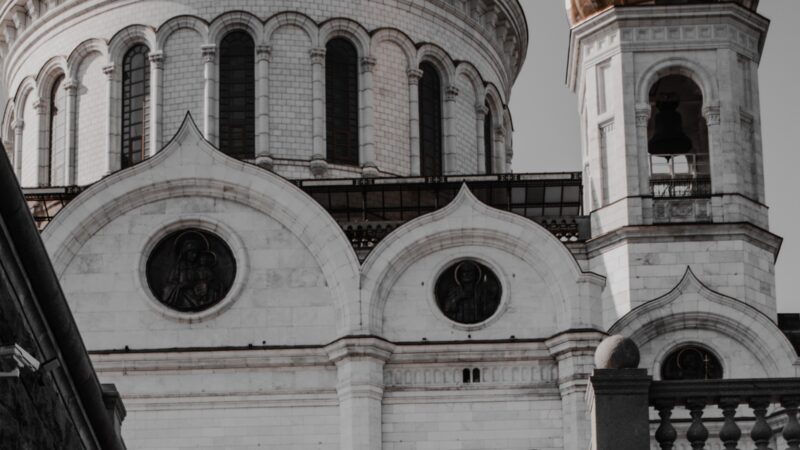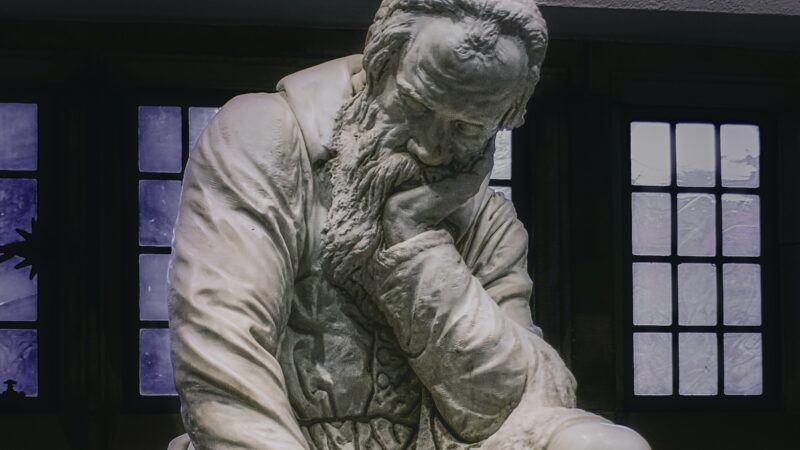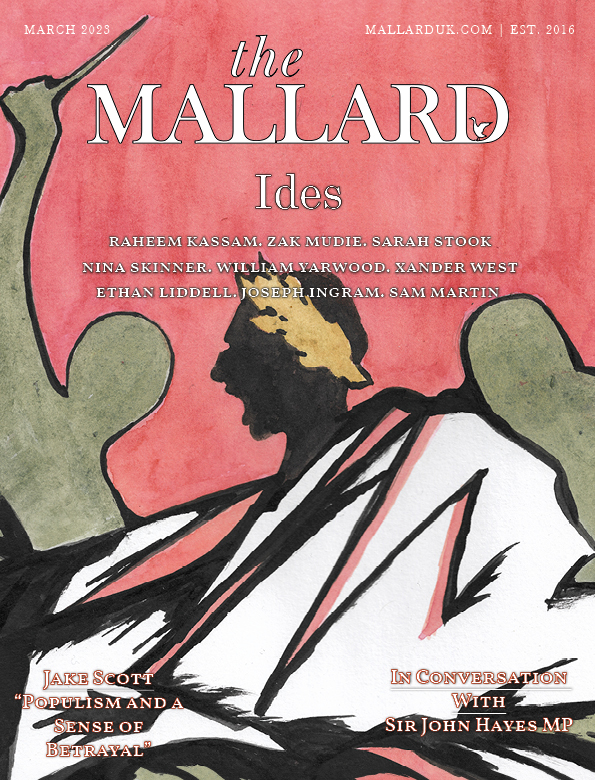A Plague Tale: A Post-apocalyptic Light Held Aloft
Respectively released by Asobo Studio in May 2019 and October 2022, A Plague Tale: Innocence and A Plague Tale: Requiem follow siblings Amicia and Hugo de Rune through a 14th-century France being torn apart by the Hundred-Years-War, the French Inquisition, and the Black Plague. Through the stories of both games, Amicia and Hugo must try to stay alive while maintaining hope in the things worth living for, all while searching for a way to save Hugo from a yet unknown sickness, the ‘macula.’
Having in my twenties platinum ranked several Metal Gear Solid games and The Last of Us, I felt right at home in A Plague Tale. However, inspired by, in addition to other post-apocalyptic games like TLOU, titles like ICO and even a Studio Ghibli film, the games’ stealth, buddy tactics, and progression of unlockables mesh the elements of several genres into an excellent gaming experience that goes far beyond formulaic stealth-action. Indeed, when not sneaking around guards, players must puzzle their way through swarms of rats with torches held aloft in what becomes the central motif of the franchise.
The two games form a unified whole, in my opinion, with the denouement of Innocence leading directly into Requiem; thus, if not explicitly specifying one or the other, when referencing A Plague Tale I will henceforth mean both games together. While an outstanding work on its own, with few areas that really stretch the player outside of the higher difficulties and character revelations too significant for merely the last third of a single game, Innocence is clearly a preparation for something larger in both gameplay and story. Fulfilling the expectation, Requiem increases the franchise’s breadth in length, map layouts, tools accessible to players, and the dynamic roles of side characters in both plot and puzzle. And yet, while changes are, of course, made between the two games (not all positive, in my opinion), the core narrative elements are consistent through both.
How the games tell the story is their best attribute, and one that was a major focus of Asobo Studio: they incorporate most of the plot-driving dialogue and characterization in the midst of the stealth and puzzle scenes. In previous-generation stealth games, one sneaks through a certain area and is rewarded with a cutscene or discovery that advances the story. This could often cause the stealth sections to become a bit utilitarian, with the back-and-forth between action and narration feeling like switching between two halves of the brain—not the best for maintaining story immersion or emotional investment.
However, with its use of furtive commentary and context-specific actions from side characters, A Plague Tale incorporates the narrative into the gameplay so seamlessly that the tension of the sneaking and action enhances the tension of the story conflicts, both external and internal, thus maintaining story immersion and blending all into a level of aesthetic experience I had rarely experienced. The tension as Amicia protects but also relies on Hugo and others with different sources of light as they traverse fields of dark, writhing rat swarms builds the sense not just of fear of failure, but of connection among and investment in the characters. This narrative aspect, alone—this integration of action and narrative—is enough reason to play the games, in that they show how modern games can tell a story in a new, verisimilar way that invests one in the increasingly layered characters more than just passive watching or trophy-focused strategizing might.
Leaving more thorough gameplay reviews to others (or, better, to players who will experience the games for themselves), I will focus below on the stories of each game. Each game has elements one doesn’t always encounter in today’s media and which make their plots deeper and more dynamic than are many other current post-apocalyptic, female-centric games. (Also, needless to say, spoilers ahead).
Innocence: ‘You can run…but no one can escape their own blood.’
A Plague Tale: Innocence’s opening chapter, titled ‘The De Rune Legacy,’ immediately places the game in terms of both aristocracy and historical context, motifs that thread throughout both games. Through the initial tutorial scenes of main deuteragonist Amicia walking the De Rune estate with her father, we learn that, a noble family in fourteenth-century France, the De Runes are beset by the wars afield with Plantagenet England and the steady growth of a new plague at home. We also learn that, due to the boy’s strange sickness, the macula, Amicia’s five-year-old brother, Hugo, has been kept separate from his fifteen-year-old sister for most of his life, with Amicia being closer to their father due to their mother’s being focused on healing the cloistered Hugo.
In the same sequence, Amicia and her father discover an obscure underground menace plaguing the forest, and the family estate is raided by the Inquisition in search of Hugo. Soon separated from both parents, the two estranged children must make their way to the boy’s doctor, secretly an alchemist, discovering along the way that the menace beneath the ground are actually floods of rats that literally pop up whenever the two children—specifically Hugo—undergo stress.
From the start it is apparent that Innocence is a story of children of good aristocrats thrust into a world falling apart. As often happens with such stories of upending times, the changes necessarily involve and are bound up with the aristocrats, themselves, their being the holders and maintainers of their culture’s values. Foreshadowed by the heightened rat activity whenever Hugo has his debilitating headaches, it is revealed that the plague of rats destroying France is somehow connected to the macula inherited through Hugo’s family line.
Thus, threaded through this story of siblings trying to survive is the subtext that the conflict involves their bloodline—the children’s aristocracy. Like countless other stories of chosen children of unique birth thrust from comfort into a world of flux, Innocence becomes a bildungsroman of learning to survive in a world that, because of their bloodline, is suddenly suspicious of and antagonistic towards them, and which may be falling apart because of them. Implicit in the story is how much blame they should assume for the heritage they did not choose and know little about.
Besides the ubiquitous rats, Amicia and Hugo’s major antagonist is the Inquisition. While the trope of ‘ackshually, big church bad’ is tired, at best (and usually unbelievable for anyone with a working knowledge of history), in the game’s fantasy world the Inquisition works excellently, without breaking immersion with an anti-church bias too common in modern works. A quasi-official sect focused not on pursuing heretics but, rather, on harnessing and using the plague, the Inquisition actually serves to illuminate Hugo’s condition for the children and players.
The Grand Inquisitor Vitalis Benevent—ironically named, his being a decrepid old man of failing health—is a typical but no less excellent character, and his Captain of the Guard, Nicholas, has easily one of the best character designs I’ve seen in a while. Together they concretise an archetypal threat to young nobles: those who would use them and their blood to amass power. This is only made more insidious when the innocent and naive Hugo comes to the forefront for a section of the game.
Thus, as is common to such stories of a time of shifting values and structures, the question of who is friend and who is foe is foremost, and Amicia and Hugo must learn to be circumspect about whom they trust, a theme that will continue into the next game. Yet, at the same time, Amicia must balance exposing Hugo to the world’s dangers with maintaining his innocence; one of game’s most charming yet unnerving dynamics is the double layer of Amicia’s vigilance for possible threats and Hugo’s playful ignorance of their danger—as well as Amicia’s suggesting such things to distract Hugo (and herself) from their plight. It is through this interplay—the need to maintain innocence as a resistance against the darkness around them while facing and surviving it—that the siblings get to know each other and the story is told.
Added to the moderating effect Hugo’s youth has on the usual nihilistic brutality of such games, the world of Innocence, as well as of its sequel, does not come off as a standard postapocalyptic setting. The greatest reason for this is the studio’s choice of its historical place, which lends it a paradoxical undertone of familiarity. Whether or not players have a ready knowledge of the Justinian Plague which serves as the background for the game’s sickness, we’ve all heard of the medieval Black Death. We know it was horrible. We also know it was survived—and served as the threshold of the Renaissance.
Placed in this context not of annihilation but of survival, the games implicitly lend themselves to a conservative undertone. Horrible times have happened, and horrible people have made them worse, but so long as one can keep a localized light burning, the seeds of civilization will survive even in the smallest communities. Exactly this happens in one of the game’s many poignant images, that of the De Rune children and their by-then found family of vagrants living, growing, and learning to thrive in a broken down castle.
Furthermore, the growing relationship between Amicia and Hugo hinges on the implicitly conservative principle of personal responsibility and moral agency—especially regarding the exigencies of circumstance and one’s relationship to power, especially over those closest to us. A theme not uncommon in post-apocalyptic stories is whether or not a rupture of society justifies a full abandonment of morality and regard for life. Throughout the story, Innocence’s answer is ‘No.’ Amicia’s killing to protect Hugo is suffused with hesitancy, sorrow, and apology—a motif established in Innocence and explored much more fully in Requiem. Hugo’s parallel relationship with violence—with the possible loss of innocence it entails—has the added complexity of his being a child, but the impetus to control himself is no less present and upheld.
Indeed, unlike other post-apocalyptic characters who grow increasingly solipsistic and nihilistic (*cough* Joel *cough*), it is Amicia and Hugo’s task to maintain moral responsibility and innocence in their respective ways when all others around them seem intent on dispensing with such things out of ambition or expediency. Virtue does not change, howevermuch the world around us seems to, nor does change relieve us of our basic nature as individual moral agents whose choices have real effects.
Although not an explicitly named theme, it is only by superceding their circumstances and instead placing themselves within a broader historical context of their aristocratic family line, while drawing closer to each other—that is, by accepting their aristocratic heritage and actively manifesting it in the present through corresponding behavior—that Amicia and Hugo are able to overcome the game’s conflicts. And, in the end, what remains is the very image that started the story: that of a family, native and found, drawing together to keep lit and held aloft sundry moments of innocent joy in order to humbly produce a better future.
Requiem: ‘Stop trying to be so tough. You might learn something.’
Picking up roughly six months after Innocence leaves off, A Plague Tale: Requiem finds the De Runes and their alchemist companion Lucas continuing their journey to heal Hugo of his macula. As signaled by the game’s opening chapter, ‘Under a New Sun,’ the sequel’s problems will seem different from its predecessor’s, but only on the surface. The Inquisition is behind them, but the deeper conflict remains—the need to treat Hugo’s macula before it reaches the next ‘threshold’ and further overtakes the boy while also avoiding pursuit from those who might try to stop or manipulate them.
After the game’s tutorial and introduction, the group visits a town in Provence to meet Magister Vaudin, another alchemist who might be able to help heal Hugo. However, Vaudin soon becomes a wedge in the relationship built through the previous game between Amicia (and the player) and Hugo. Foreshadowed previously by the minor dialogue of the tutorial, this and other events bring to the fore the question of whether or not the deuteragonists should trust potential allies.
In Innocence the core conflict was simply to protect Hugo, which, considering the siblings’ shaky relationship, was rightly not undercut by a serious questioning of motives and methods. However, in Requiem Amicia becomes so focused on protecting Hugo that she ends up pushing away potential help, not only the questionable alchemical order but even their mother and companion, Lucas. Amicia’s arguable overprotectiveness shows itself in two ways, a growing comfortability with violence and an inability to judge friend from foe (or visa versa).
In the game’s best element of complexity, the suspicion of allies is eventually turned on the increasingly violent Amicia, herself, who sees her growing willingness to kill yet cannot seem to mitigate it. The theme of protecting Hugo becomes, in a game about a pathogen, a psychological pathology in Amicia—her own sublimated macula that, like Hugo’s literal one, can just as easily be misused to disasterous effect should she blindly give herself over to its prejudices.
This type of storyline—that of the strong female suspicious of all purported help, especially from men, and whose toughness is altogether good and an end in itself—is, by now, nothing new. Those sympathetic to it will find many things to admire in Amicia, and can probably play the game without sharing my interpretation (a mark of a good work of narrative art in any medium). However, Requiem is, thankfully, not merely a story of a girlboss teenager giving the proverbial middle finger to allies who seem to hinder her in protecting Hugo. To be sure, despite admonitions from friends and family, Amicia does follow this arc—until the siblings fall in with Arnaud.
A mercenary whose soldiers have previously been thinned out by Amicia, the mercenary Arnaud pursues the De Runes at different portions of the game. However, Arnaud eventually saves the siblings from the uncontrollable effects of their own actions. Whereas the still childlike Hugo trusts Arnaud relatively quickly (Arnaud’s role as father figure for the siblings is a layer I don’t have time to examine here), Amicia remains skeptical—understandable, considering the concussion and remaining scar on her forehead he’d previously given her. However, implicit in the interactions between Amicia, Hugo, and Arnaud is the irony that by too bluntly rejecting Arnaud’s help in order to protect Hugo, Amicia might ruin the very innocence she has tried to preserve—a theme that has been there from the game’s beginning.
Perhaps more significant, the game thus reverses the ‘male allies = implicit enemies’ trajectory of many recent female-driven plots, instead arguably justifying Hugo’s trust rather than Amicia’s distrust. The game dares to introduce the complexity of an enemy actually turning out to be an ally—not unheard of in today’s stories, but rarely involving an older male.
Arnaud’s place in the story is by no means clear-cut, nor is Requiem a mere reactionary tale of an overweening teenage girl being cut down to size (which would, itself, be formulaic, simplistic, and boring). Nonetheless, the fact that he is allowed to add complexity to Amicia’s development—in a way that highlights her shortsightedness—is refreshing in that it keeps Amicia from falling into the prescribed tropes and, by now, chauvinistic stereotypes of recent heroines. Rather, through his similarities and differences with her, Arnaud serves to highlight the capacity of the untutored, rash Amicia to go overboard.
While, like the other side characters, he remains in the background for long portions of the game, the mercenary nonetheless continues to shift the story’s moral center away from Amicia, thus paradoxically allowing her to grow in how she responds to her own impulses. Inn my opinion the story could have used more of an explicit admission on Amicia’s part that Arnaud might have been right about a few things. Nonetheless, the mercenary adds a welcome complexity in that his presence—and the themes he concretises—keeps the story from falling into the simple formulae of other current media—something I, and many others, have been asking for for our female characters.
The De Rune Legacy
By layering the themes of its predecessor with a variety of new elements and subsequent possible interpretations, Requiem more than fulfills the setup of Innocence, and it secures both parts of A Plague Tale at the top of the post-apocalyptic genre. Both show what games are capable of and are well worth playing by both stealth veterans and those looking for a unique and involved aesthetic experience.
Furthermore, as with Innocence, Requiem expands the tropes it employs. Added to the recurrence of civilization’s rise and fall (which could have just as easily been the topic of my commentary on the game) is the localization of such vicissitudes in the individual Amicia, herself. Parallelling Hugo’s literal macula, Amicia’s choice of whether or not to give over to her wrathful passion and lose perspective and self control—really, the classical virtues of Prudence and Temperance—is that upon which the future will hinge.
Thus, whether intentional or not, for those willing to see it the games offer an implicitly conservative iteration of the post-apocalyptic setting. Considering that conservatism’s basic function involves, to paraphrase Mahler, the protection and preservation not of ashes but of flame—of that which we have and love, especially things like innocence, historical humility, and family connection, this is a fitting and timely nuance. The games are by no means simply ‘based cons do the apocalypse,’ but the inclusion of such elements does show how stepping from the path of prescribed ethos and character alignments can create an enriching work of art that will satisfy players of many stripes. With such diverse and complex elements—and, more importantly, the depth of immersion with which Asobo pulls them off—the franchise, itself, instantiates the very light that forms its central image, offering an implicitly brighter experience amidst a genre usually plagued and darkened by cosmic ambivalence and moral nihilism.













